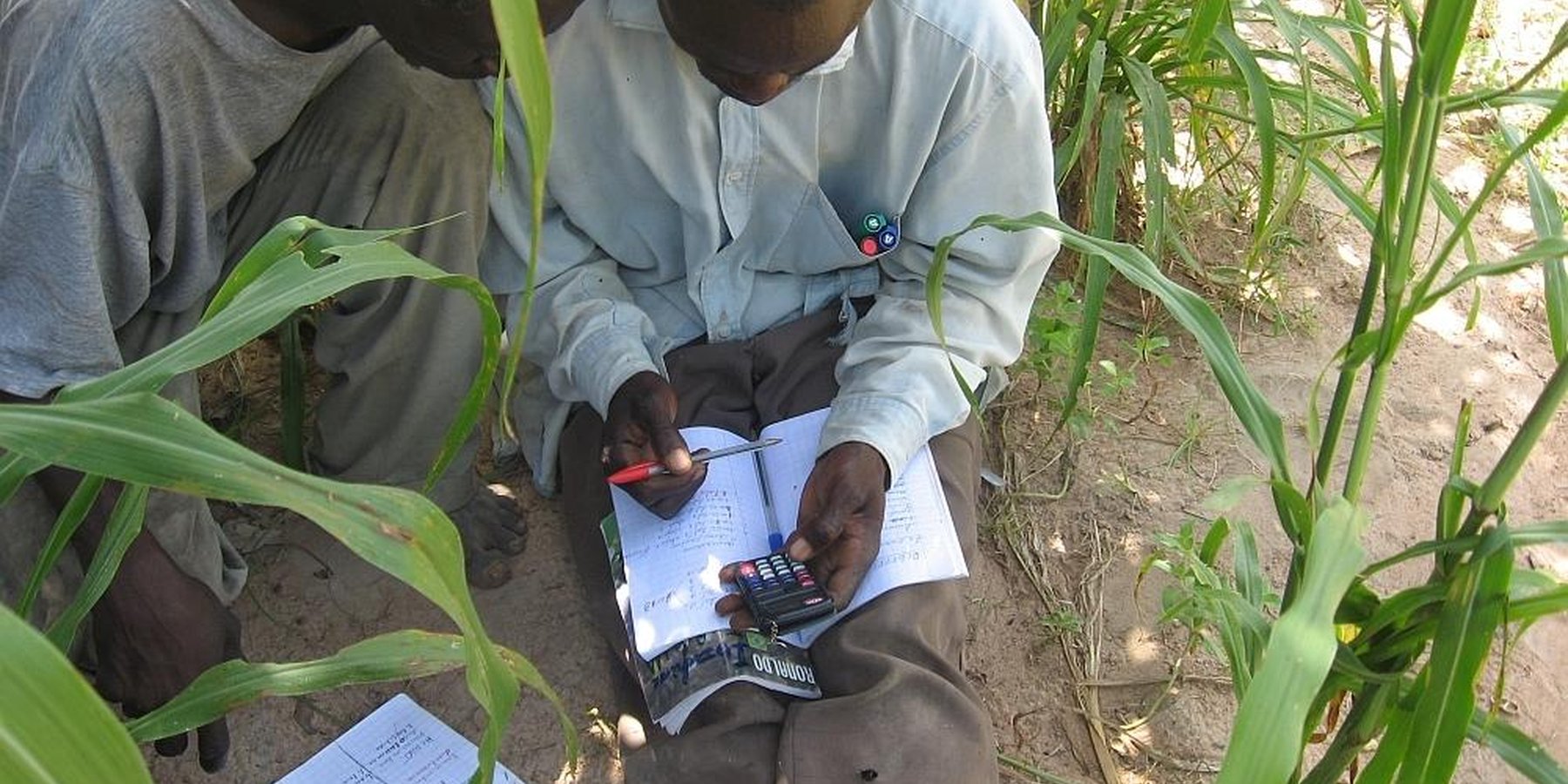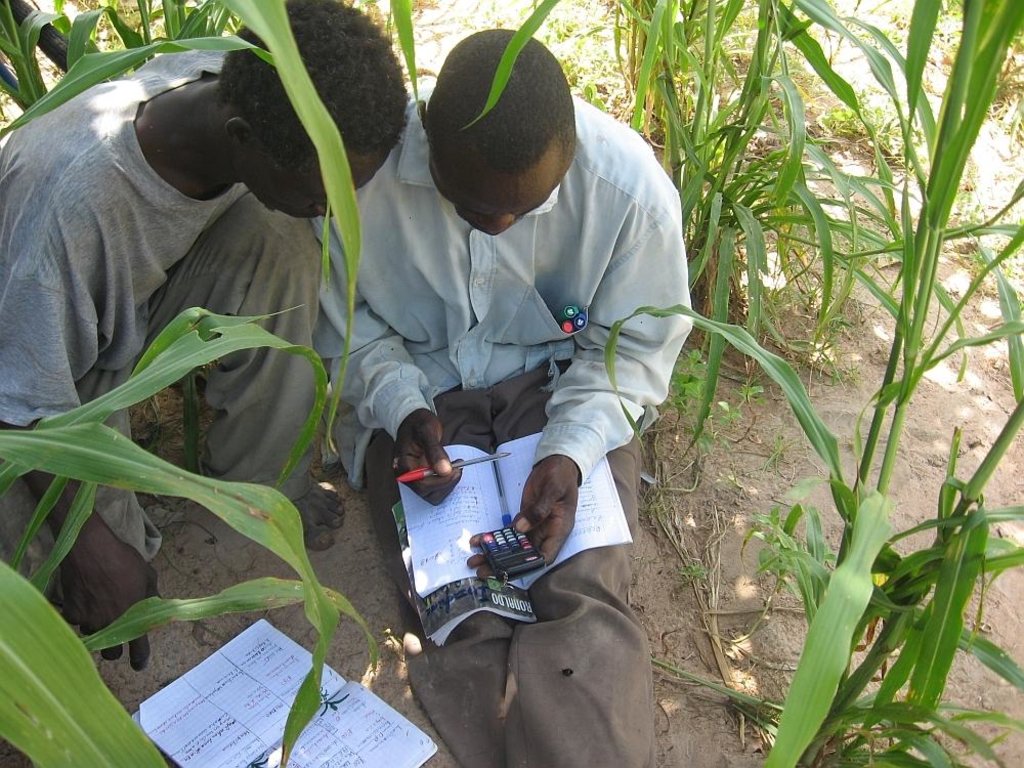Locally sourced farming trainers: the farmer resource persons system [มาลี]
- ผู้สร้างสรรค์:
- การอัพเดท:
- ผู้รวบรวม: Dieter Nill
- ผู้เรียบเรียง: –
- ผู้ตรวจสอบ: Laura Ebneter
Approche paysanne formateur endogène: dispositif de personnes ressources paysannes
approaches_2507 - มาลี
ดูส่วนย่อย
ขยายทั้งหมด ย่อทั้งหมด1. ข้อมูลทั่วไป
1.2 รายละเอียดที่ติดต่อได้ของผู้รวบรวมและองค์กรที่เกี่ยวข้องในการประเมินและการจัดเตรียมทำเอกสารของแนวทาง
ผู้เชี่ยวชาญ SLM:
Guindo Idrissa
idrissa.guindo@helvetas.org
HELVETAS - Swiss Intercooperation
มาลี
ผู้เชี่ยวชาญ SLM:
Keita Lassana
HELVETAS - Swiss Intercooperation
มาลี
ผู้เชี่ยวชาญ SLM:
Dacko Maïga Rosaline
rosaline.dacko@helvetas.org
HELVETAS - Swiss Intercooperation
มาลี
ชื่อของโครงการซึ่งอำนวยความสะดวกในการทำเอกสารหรือการประเมินแนวทาง (ถ้าเกี่ยวข้อง)
Deutsche Gesellschaft für Internationale Zusammenarbeit (GIZ) - เยอรมนีชื่อของโครงการซึ่งอำนวยความสะดวกในการทำเอกสารหรือการประเมินแนวทาง (ถ้าเกี่ยวข้อง)
HELVETAS (Swiss Intercooperation)1.3 เงื่อนไขที่เกี่ยวข้องกับการใช้ข้อมูลที่ได้บันทึกไว้ผ่านทาง WOCAT
วันที่เก็บรวบรวมข้อมูล (ภาคสนาม):
01/09/2012
ผู้รวบรวมและวิทยากรหลักยอมรับเงื่อนไขเกี่ยวกับการใช้ข้อมูลที่ถูกบันทึกผ่านทาง WOCAT:
ใช่
2. คำอธิบายของแนวทาง SLM
2.1 การอธิบายแบบสั้น ๆ ของแนวทาง
A network of farmer resource persons (FRPs) is built up to provide advice and training according to the on-the-ground needs of farmers
2.2 การอธิบายอย่างละเอียดของแนวทาง
การอธิบายอย่างละเอียดของแนวทาง:
This approach aims to promote a sustainable and inexpensive advisory support model for farming by training up a pool of expert farmers to spearhead the dissemination of agricultural innovations. This involves establishing local resources in places where public technical services are lacking or non-existent.
Farmer Apex Organisation (FaAO) identify local experts who possess relevant know-how and then develop their capacities for teaching and facilitation. A network of farmer resource persons (FRPs) is then gradually built up to provide advice and training according to the on-the-ground needs of farmers working in different areas such as farm management, rice growing, nurseries and transplanting, compost making, contour farming, combatting erosion, shea management, creating a ridge-furrow system, seed production, conserving produce, market gardening techniques, water management, fish farming, etc.
The apex organisations nominate their resource persons. With the support of technical partners, they then categorise FRPs according to their qualifications, expertise and communication skills. The support structure strengthens the capacities of FRPs according to their needs. These resource persons set themselves up as experts, offering their services to other farmers. PRPs benefit from group capacity building exercises in advocacy and facilitation, and their technical capacities are built according to individual needs and the requirements of the market. Once trained, FRPs can organise themselves (into economic interest groups, cooperatives, etc.) and then provide services as requested by farms, local authorities, apex organisations and support partners. Service provision is remunerated in several ways and in accordance with the means of the client: in kind, lump sum, fee-based payment, compensation, etc.
Role of stakeholders: The apex organisation identifies, categorises and mobilises the FRPs and participates in monitoring and evaluating the implementation of the system. The support structure supports the process of identifying and categorising the FRPs for training. It organises thematic training and monitors and evaluates implementation. The territorial community promotes the scheme and mobilises FRPs. Technical services build the capacities of FRPs through the provision of training and advisory support.
Other important information: FRPs provide services to their FaAO members and others. In 2011, two groups of experts (UFROAT and Cèsiri) earned more than 7,000,000 CFA francs in service provision (training) takings. FRPs are employed by other organisations, such as the Rural Community Support Project (PACR), World Vision, LuxDev and the Agricultural Sectors Support Programme (PAFA).
2.3 รูปภาพของแนวทาง
2.5 ประเทศ ภูมิภาค หรือสถานที่ตั้งที่ได้นำแนวทางไปใช้
ประเทศ:
มาลี
ภูมิภาค/รัฐ/จังหวัด: :
Mali
ข้อมูลเฉพาะเพิ่มเติมของสถานที่ตั้ง:
Sikasso (Koutiala, Yorosso), Ségou (Bla, San, Tominian)
2.6 วันที่เริ่มต้นและสิ้นสุดของแนวทาง
ระบุปีที่เริ่ม:
2007
2.7 ประเภทของแนวทาง
- ใช้โครงงานหรือแผนงานเป็นฐาน
2.8 เป้าหมายหรือวัตถุประสงค์หลักของแนวทาง
The system aims to install a local support system, building on existing competencies.
The SLM Approach addressed the following problems: low dissemination of already existing knowledge and expertise related to on-the-ground needs of farmers
2.9 เงื่อนไขที่เอื้ออำนวยหรือเป็นอุปสรรคต่อการนำเทคโนโลยีภายใต้แนวทางนี้ไปปฏิบัติใช้
อื่นๆ
- เป็นอุปสรรค
low dissemination of already existing knowledge and expertise related to on-the-ground needs of farmers
Treatment through the SLM Approach: Farmer Apex Organisation (FaAO) identify local experts who possess relevant know-how and then develop their capacities for teaching and facilitation. A network of farmer resource persons (FRPs) is then gradually built up to provide advice and training according to the on-the-ground needs of farmers working in different areas
3. การมีส่วนร่วมและบทบาทของผู้มีส่วนได้ส่วนเสียที่เกี่ยวข้อง
3.1 ผู้มีส่วนได้ส่วนเสียที่เกี่ยวข้องในแนวทางนี้และบทบาท
- ผู้ใช้ที่ดินระดับท้องถิ่นหรือชุมชนระดับท้องถิ่น
- ผู้เชี่ยวชาญ SLM หรือที่ปรึกษาการเกษตร
- องค์กรพัฒนาเอกชน
- รัฐบาลระดับท้องถิ่น
3.2 การเกี่ยวข้องของผู้ใช้ที่ดินระดับท้องถิ่นหรือชุมชนระดับท้องถิ่นในช่วงต่างๆของแนวทาง
| ความเกี่ยวข้องของผู้ใช้ที่ดินระดับท้องถิ่นหรือชุมชนระดับท้องถิ่น | ระบุผู้ที่มีส่วนเกี่ยวข้องและอธิบายกิจกรรม | |
|---|---|---|
| การริเริ่มหรือการจูงใจ | ไม่ลงมือ | |
| การวางแผน | ไม่ลงมือ | |
| การดำเนินการ | ปฏิสัมพันธ์ | |
| การติดตามตรวจสอบหรือการประเมินผล | ปฏิสัมพันธ์ | |
| Research | ไม่ลงมือ |
3.4 การตัดสินใจเลือกใช้เทคโนโลยี SLM
ระบุผู้ที่ทำการตัดสินใจเลือกเทคโนโลยีมากกว่าหนึ่งวิธีไปปฏิบัติใช้:
- ผู้ใช้ที่ดินเป็นผู้ตัดสินใจหลัก โดยการสนับสนุนจากผู้เชี่ยวชาญ SLM
การอธิบาย:
Decisions on the method of implementing the SLM Technology were made by mainly by land users supported by SLM specialists
4. การสนับสนุนด้านเทคนิค การสร้างขีดความสามารถ และการจัดการด้านความรู้
4.1 การสร้างขีดความสามารถ / การอบรม
ได้มีการจัดอบรมให้แก่ผู้ใช้ที่ดินหรือผู้มีส่วนได้ส่วนเสียคนอื่น ๆ หรือไม่:
ใช่
ให้ระบุว่าใครเป็นผู้ได้รับการอบรม:
- ผู้ใช้ที่ดิน
- เจ้าหน้าที่ภาคสนาม / ที่ปรึกษา
รูปแบบการอบรม:
- เกษตรกรกับเกษตรกร
- จัดการประชุมสู่สาธารณชน
หัวข้อที่พูด:
Individuals selected as potential FRPs already have a wealth of talent and know-how. This practice aims to further add to this knowledge and expertise and ensure it is disseminated effectively. The system aims to install a local support system, building on existing competencies.
4.2 การบริการให้คำแนะนำ
ผู้ใช้ที่ดินมีการเข้าถึงการรับบริการให้คำปรึกษาหรือไม่:
ใช่
ระบุว่ามีบริการให้คำปรึกษาหรือไม่:
- ไปเยี่ยมชมสถานที่
การอธิบาย/แสดงความคิดเห็น:
Name of method used for advisory service: Training of local experts for teaching ; Key elements: A network of farmer resource persons (FRPs) is gradually built up to provide advice and training ; Farmer Apex Organisation (FaAO) identify local experts who possess relevant know-how and then develop their capacities for teaching and facilitation. A network of farmer resource persons (FRPs) is then gradually built up to provide advice and training according to the on-the-ground needs of farmers working in different areas. The system aims to install a local support system, building on existing competencies.
Advisory service is quite adequate to ensure the continuation of land conservation activities
4.3 การเสริมความแข็งแกร่งให้กับสถาบัน (การพัฒนาองค์กร)
สถาบันได้รับการจัดตั้งขึ้นมาหรือเสริมความแข็งแกร่งโดยแนวทางนี้หรือไม่:
- ใช่ อย่างมาก
ระบุระดับของสถาบันที่ได้รับการเสริมความแข็งแกร่งหรือจัดตั้งขึ้นมา:
- ท้องถิ่น
ระบุประเภทของการให้ความช่วยเหลือสนับสนุน:
- ด้านการเงิน
- การสร้างขีดความสามารถ / การอบรม
4.4 การติดตามตรวจสอบและประเมินผล
การติดตามตรวจสอบและประเมินผลเป็นส่วนหนึ่งของแนวทางหรือไม่:
ใช่
ความคิดเห็น:
technical aspects were ad hoc monitored by project staff, land users through observations
socio-cultural aspects were ad hoc monitored by project staff, land users through observations
economic / production aspects were ad hoc monitored by project staff, land users through measurements
management of Approach aspects were ad hoc monitored by project staff, land users through observations
There were no changes in the Approach as a result of monitoring and evaluation
There were no changes in the Technology as a result of monitoring and evaluation
4.5 การวิจัย
การวิจัยเป็นส่วนหนึ่งของแนวทางหรือไม่:
ใช่
ระบุหัวข้อเรื่อง:
- สังคมวิทยา
- เศรษฐศาสตร์หรือการตลาด
- นิเวศวิทยา
- เทคโนโลยี
5. การสนับสนุนด้านการเงินและวัสดุอุปกรณ์
5.1 ระบุงบประมาณประจำปีสำหรับแนวทาง SLM นี้
แสดงความคิดเห็น (แหล่งของการระดมทุน ผู้บริจาคคนสำคัญ):
Approach costs were met by the following donors: international non-government: 100.0%
5.2 การสนับสนุนด้านการเงิน / วัสดุอุปกรณ์ให้แก่ผู้ใช้ที่ดิน
ผู้ใช้ที่ดินได้รับการสนับสนุนด้านการเงิน / วัสดุอุปกรณ์ไปปฏิบัติใช้เทคโนโลยีหรือไม่:
ใช่
5.3 เงินสนับสนุนสำหรับปัจจัยนำเข้า (รวมถึงแรงงาน)
ถ้าแรงงานโดยผู้ใช้ที่ดินเป็นปัจจัยนำเข้าที่มีอยู่มากมาย ระบุด้วยว่าเนื่องจาก:
- จ่ายเป็นเงินสด
6. การวิเคราะห์ผลกระทบและการสรุป
6.1 ผลกระทบของแนวทาง
ช่วยให้ผู้ใช้ที่ดินนำเอาเทคโนโลยี SLMไปใช้และบำรุงรักษาสภาพไว้ได้หรือไม่:
- ไม่ใช่
- ใช่ เล็กน้อย
- ใช่ ปานกลาง
- ใช่ อย่างมาก
A network of farmer resource persons (FRPs) provides advice and training according to the on-the-ground needs of farmers working in different areas such as farm management, rice growing, nurseries and transplanting, compost making, contour farming, combatting erosion, shea management, creating a ridge-furrow system, seed production, conserving produce, market gardening techniques, water management, fish farming, etc.
ทำให้กลุ่มด้อยโอกาสมีอำนาจทางสังคมและเศรษฐกิจหรือไม่:
- ไม่ใช่
- ใช่ เล็กน้อย
- ใช่ ปานกลาง
- ใช่ อย่างมาก
Availability of low-cost local experts; consideration of local knowledge when resolving local problems (local advice)
Did other land users / projects adopt the Approach?
- ไม่ใช่
- ใช่ เล็กน้อย
- ใช่ ปานกลาง
- ใช่ อย่างมาก
FRPs are employed by other organisations, such as the Rural Community Support Project (PACR), World Vision, LuxDev and the Agricultural Sectors Support Programme (PAFA).
Did the Approach lead to improved livelihoods / human well-being?
- ไม่ใช่
- ใช่ เล็กน้อย
- ใช่ ปานกลาง
- ใช่ อย่างมาก
Improved agricultural productivity; development of local businesses’ capacities for processing and marketing; income offered by FRP service provision motivates expert farmers.
Did the Approach help to alleviate poverty?
- ไม่ใช่
- ใช่ เล็กน้อย
- ใช่ ปานกลาง
- ใช่ อย่างมาก
6.2 แรงจูงใจหลักของผู้ใช้ที่ดินเพื่อที่จะนำ SLM ไปปฏิบัติใช้
- การผลิตที่เพิ่มขึ้น
- การจ่ายเงินหรือการช่วยเหลือ
- เกียรติภูมิ แรงกดดันทางสังคม ความเชื่อมแน่นทางสังคม
6.3 ความยั่งยืนของกิจกรรมของแนวทาง
ผู้ใช้ที่ดินสามารถทำให้สิ่งต่างๆ ที่ได้ปฏิบัติใช้โดยแนวทางนี้ยั่งยืนได้หรือไม่ (โดยไม่มีการสนับสนุนจากภายนอก):
- ใช่
ถ้าตอบว่าใช่ ให้อธิบายว่าอย่างไร :
Once trained, FRPs can organise themselves (into economic interest groups, cooperatives, etc.) and then provide services as requested by farms, local authorities, apex organisations and support partners.
6.4 จุดแข็งและข้อได้เปรียบของแนวทาง
| จุดแข็ง / ข้อได้เปรียบของแนวทางในทัศนคติของผู้รวบรวมหรือวิทยากรหลัก |
|---|
|
Development of local businesses’ capacities for processing and marketing |
| Mitigation of shortfall in agricultural extension and lack of decentralised technical services |
| The income offered by FRP service provision motivates expert farmers. Their services are appreciated by the client and are more readily understood. The availability of expertise is sustainable given that the FRPs are based in farming areas and continue to work as farmers. Sourcing an expert is quick and easy. |
| Individuals selected as potential FRPs already have a wealth of talent and know-how. This practice aims to further add to this knowledge and expertise and ensure it is disseminated effectively. The system aims to install a local support system, building on existing competencies. |
| Improved agricultural productivity |
| Availability of low-cost local experts (How to sustain/ enhance this strength: It is important to control the costs of FRP service provision – the fact that FRP support is inexpensive is one of the principal reasons for setting up such a system and for procuring FRP services. ) |
| Consideration of local knowledge when resolving local problems (local advice) (How to sustain/ enhance this strength: FRPs must be accessible – high levels of demand from outside the locality can lead to FRPs being unavailable for local farmers.) |
7. การอ้างอิงและการเชื่อมต่อ
7.1 วิธีการหรือแหล่งข้อมูล
- ไปเยี่ยมชมภาคสนาม การสำรวจพื้นที่ภาคสนาม
- การสัมภาษณ์กับผู้ใช้ที่ดิน
7.2 การอ้างอิงถึงสิ่งตีพิมพ์
ชื่อเรื่อง ผู้เขียน ปี ISBN:
Manual of Good Practices in Small Scale Irrigation in the Sahel. Experiences from Mali. Published by GIZ in 2014
ช่องทางในการสืบค้น และราคา:
http://star-www.giz.de/starweb/giz/pub/servlet.starweb
ชื่อเรื่อง ผู้เขียน ปี ISBN:
Intercooperation/Dori Expertise (2011): Rapport de capitalisation du dispositif de personnes ressources paysannes
ลิงก์และโมดูล
ขยายทั้งหมด ย่อทั้งหมดลิงก์
ไม่มีลิงก์
โมดูล
ไม่มีโมดูล



